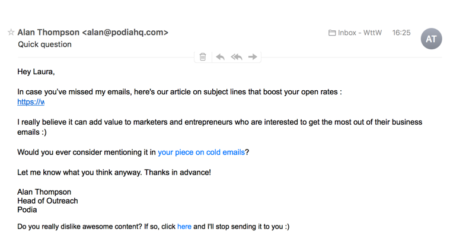http://feedproxy.google.com/~r/markgrow/~3/EudIIvm9HNY/

By Evelyn Starr, {grow} Community Member
In Mark Schaefer’s book Marketing Rebellion, he states that consumers are now in control of brands and that this is the new order of marketing.
From an industry standpoint, this is certainly an unsettling new order!
But from consumers’ point of view, nothing has changed.
The disparity between the industry’s “a-brand-is-what-we-say-it-is” perspective and consumers’ true perception of a brand comes from the industry’s misunderstanding of how brands form in the minds of consumers.
Let’s explore that today.
The changing idea of “brand”
Marketers have long thought of “brand” in the cattle-marking sense. We are marking this entity in the manner we want you to see it.
Marketers rationalized that consistent marking and repeated impressions over time would make their conception of the brand actually become the brand in consumers’ minds.
The problem is that companies were only factoring their one-way communication into consumers’ image of a brand.
How brands form today
Consumers – humans – are wired for survival.
From our earliest days we’ve had to make decisions to keep ourselves alive.
Our early decisions included whether an encountered animal was a predator or prey. We used our past experiences and those we gleaned from others to categorize animals in our minds so we knew quickly whether to flee to safety or to pursue dinner.
Today’s challenges are less about bodily threats, and more focused on managing the thousands of messages that come our way each day.
We don’t have time to consider each message anew.
Instead, we do what we have always done – we accumulate experiences with an entity to formulate an image that helps us decide quickly whether we want to give our attention to that entity or not.
We brand to survive.
A sum of experiences
This is how brands form in consumers’ minds. They are the sum of all the experiences the consumer has had with the brand.
Some of those experiences are marketing messages from the company. But many experiences occur without the company’s knowledge.
Product usage experiences at home, out-of-stock situations in store, tales of good or bad experiences with the brand from friends, experiences working for the company…these and more get stored in the folder marked for that brand in that consumer’s mind.
Coca Cola’s Brand Image in Advertising and in Reality
In Mark’s recent post about the idea of brand, he featured an 1890 Coca Cola ad where the company portrayed the brand as sophisticated, youthful and vigorous.

By the 1950s, Coca Cola was still promoting those attributes in campaigns with the taglines “Almost everyone appreciates the best” and “Sign of good taste”.
My father worked for Coca Cola in New York City for two short stints in the late 1950s.
In June 1958 he was one of many college students Coca Cola hired for long shifts stacking bottles as they came off the line. The company paid overtime, welcome extra funds to college students.
The second stint was after he got out of the army in December 1959. The company paid overtime then too, and honored his union card meaning he got paid for the December holidays though he only worked a few days.
My father felt grateful to Coca Cola for the opportunity to earn much needed money. The jobs proved to be fun because the young people working there enjoyed being together.
My father’s brand image of Coca Cola is generous, fun and youthful from his experience working for the company. Not sophisticated though as the ads were saying.
When I was a child, Coca Cola was saying it wanted to teach the world to sing. Still a youthful and vigorous portrayal of the brand, though perhaps less sophisticated.
My parents did not keep Coca Cola in the house, however. My mother was health conscious before it was fashionable and did not want us to have the sugary drink.
My brand image of Coca Cola was that despite catchy TV commercials the product was not good for you.
As you can see, Coca Cola’s image in my mind and in my father’s mind came more from our experiences than from messages the company conveyed. We made choices about the brand and talked about it from our own perspective.
We controlled the Coca Cola brand in our lives.
Consumers Brand to Survive Every Day
According to Beverage Industry magazine, in 2018 the top 100 beverage companies accounted for 221 products in 15 different categories.
No matter which beverage category we want, we are still deciding among several brands.
And this is just a beverage choice.
We make hundreds of product and brand choices daily.
That is why we brand to survive.
We use our past experiences to shortcut the consideration process and decide quickly so we can move on with our lives.
Social media wake up call
Before the internet, we mostly kept our brand experiences to ourselves. Maybe we told a few people in our innermost circles.
Only a few souls were motivated to complain or compliment the brand wrote or called the company. Once the internet arrived, a few more emailed companies their thoughts.
Then came social media.
In the mid-2000s as Facebook, Twitter and YouTube launched, marketers discovered that not only could they advertise there, but consumers could express their feelings and share their experiences with brands there.
Suddenly consumers had the same kind of broad media platform that brands had enjoyed for years.
Social media reversed the communication flow of brand messages and turbocharged it.
Marketers felt like consumers had wrested control of their brands from them as thousands of consumer brand messages flew at them on social media, dominating conversation about their brand.
But what really happened is that they were finally privy to consumer conversations that happened in private before but now happened in public with a megaphone.
What does brand to survive mean for marketers?
Marketing isn’t going to override thousands of years of human evolution. Consumers’ branding-to-survive modus operandi is the reality that companies must face.
With social media, companies can’t feign ignorance and risk flak for disingenuous, inauthentic or inappropriate messaging, as Peloton learned recently.
The way to cope is to switch marketing’s focus from messaging to experience.
Every brand experience matters. Brands are constantly evolving in consumers’ minds. Recent experiences can loom large.
Marketers should be listening to customers via all channels available to them – social media, customer service lines, in-store, website help chats, market research – to understand their brand’s current image from the customer’s point of view.
With a benchmarked starting point, marketers need to articulate what they want the brand experience and image to be and then map a course to get there.
The course reaches beyond the marketing department into all areas of the business. Employees’ experience with the brand and how they talk about it is a significant contributor to brand image. Same for partners, vendors, anyone who comes in contact with the brand.
Even with perfect execution, you can’t control your brand. With careful execution you can influence it though and also build much goodwill that can buffer some less-than-ideal experiences.
If this effort seems daunting, remember that the humanity that causes consumers to brand also promotes understanding, forgiveness and enthusiasm.
Working toward exceptional brand experiences can be rewarding and give your brand a true competitive advantage.
Maybe it can even teach the world to sing!
 Evelyn Starr is a brand strategist, writer and Founder & CEO of E. Starr Associates which specializes in marketing help for brands in adolescence, brands that have stalled after their initial success. Connect with Evelyn on LinkedIn and Twitter.
Evelyn Starr is a brand strategist, writer and Founder & CEO of E. Starr Associates which specializes in marketing help for brands in adolescence, brands that have stalled after their initial success. Connect with Evelyn on LinkedIn and Twitter.
Illustration courtesy Unsplash.com
The post Why branding is rooted in evolution. We brand to survive. appeared first on Schaefer Marketing Solutions: We Help Businesses {grow}.











